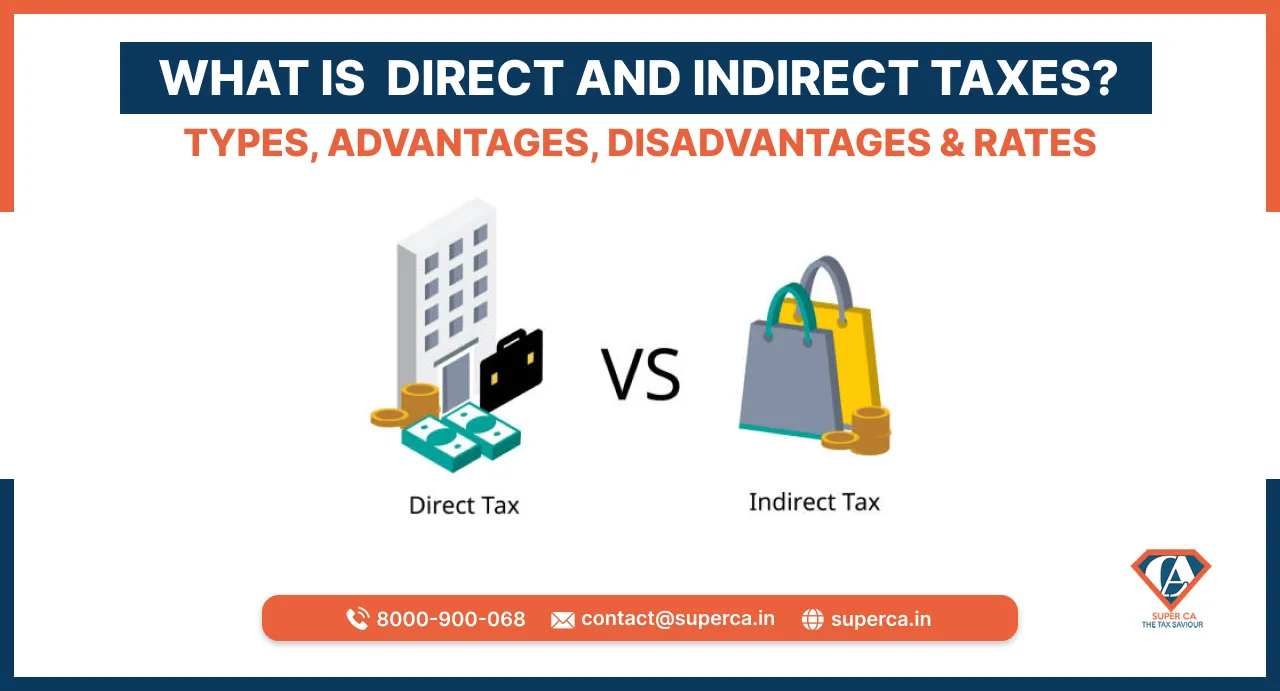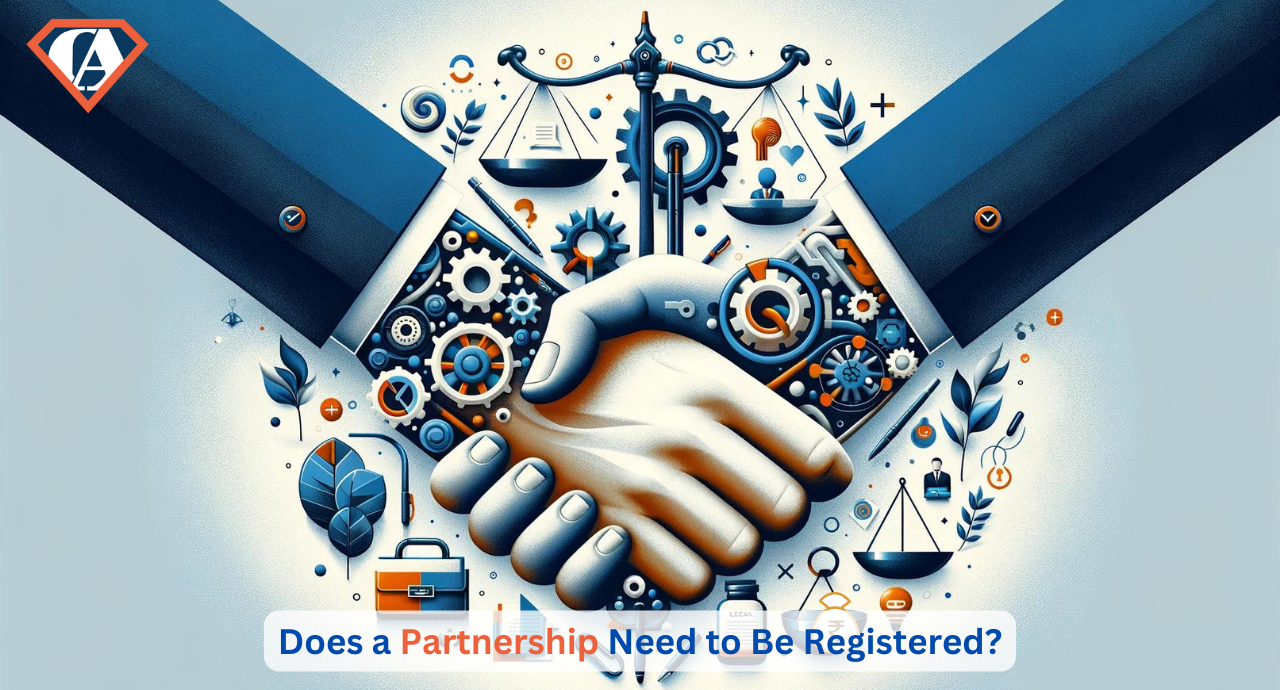What are Direct and Indirect Taxes? Types, Advantages, Disadvantages & Rates
- Posted By SuperCA
- On 14 June

Tax is like a compulsory fee that is levied on individuals and companies. This tax is levied by the Central and State Government in order to help in building the economy of the country by meeting different types of public expenses. There are generally two types of taxes- direct taxes and indirect taxes.
Direct Tax
A direct tax is the kind of tax that is applied on a taxpayer directly. The taxpayer has to pay the direct tax to the government and this tax can not be passed to anyone else. Some of the direct taxes that are levied by the government on taxpayers are as follows:
- Income Tax: An income tax is levied on those individuals who fall into different tax slabs on the basis of their incomes. They have to file their income tax returns on an annual basis and be eligible for a tax refund or for paying the tax.
- Corporate Tax: Corporate Tax is paid by those companies that are either registered in India or perform operations in India. This tax is paid on the profits that are earned by them from their business. The different amount of corporate tax is paid by different companies on the basis of the flat rates decided by the government.
- STT(Securities Transaction Tax): An STT is applied when the dealings of securities that are listed on an authorised stock exchange takes place.
Advantages and Disadvantages of Direct Taxes
The direct taxes have some benefits and are somewhat helpful in the social and economic growth of a country. Some of the advantages are:
- Curbs Inflation: Whenever there is monetary inflation, the government increases the rates of taxes. This results in a decrease in demands for goods and services which in turn makes the inflation condense.
- Maintains social and economic balance: In order to balance out income inequalities, the government has devised tax slabs and exemptions that are based on the earnings of an individual and his economic situation.
There are some disadvantages of Direct taxes as well. But, the time consuming procedures of filing ITRs is a hectic task.
Indirect Tax
An indirect tax is the type of tax which the government applies on goods and services rather than applying it on the income or profit of a person. These taxes can be shifted from one person to another person. In the earlier times, a number of taxes were levied and it meant that people had to pay more than the actual cost of the product they bought or the service that they wanted to acquire.
GST(Goods and Services Tax):
The GST is one of the indirect taxes that is levied by the government of India. The GST embraced a lot of indirect tax laws. Let us go through some of the earlier imposed indirect taxes in the country:
- Customs Duty: This tax was levied on goods that arrived in the country from foreign countries. It was an import duty which was paid by the consumers or the retailers in the end.
- Central Excise Duty: This tax had to be paid by the manufacturers of a product. But the manufacturers used to shift it to the retailers and wholesalers.
- Service Tax: This tax was levied on the gross amount that the service provider changes on the recipient.
- Sales Tax: This tax had to be paid by retailers. But they used to shift it to the consumers by levying sales tax on their goods and services.
- Value Added Tax(VAT): This tax was levied on the value of those goods and services that were added in either the manufacturing or distribution of the product and was finally shifted to the customers.
GST: An Indirect Tax
Ever since the launch of GST, a positive change in the fiscal domain of India can be seen. All the taxes that were levied earlier are no longer in use due to the introduction of GST. It is also making its slogan the reality of India: “One Nation, One TAx, One Market.”
It is also true that with the introduction of GST, one of the biggest relief for taxpayers was the end of the “cascading effect of tax.” In this condition, the end consumer has to face the taxes that are calculated on the pre-computed taxes and pay them, which would result in an inflated price. However, under GST, this cascading effect came to an end and now the customer does not have to pay the taxes that they had to pay earlier.
Conclusion:
After going through the blog about both direct and indirect taxes, we can say that both direct and indirect taxes are quite necessary and important for our economy to grow and for the betterment of our country.






